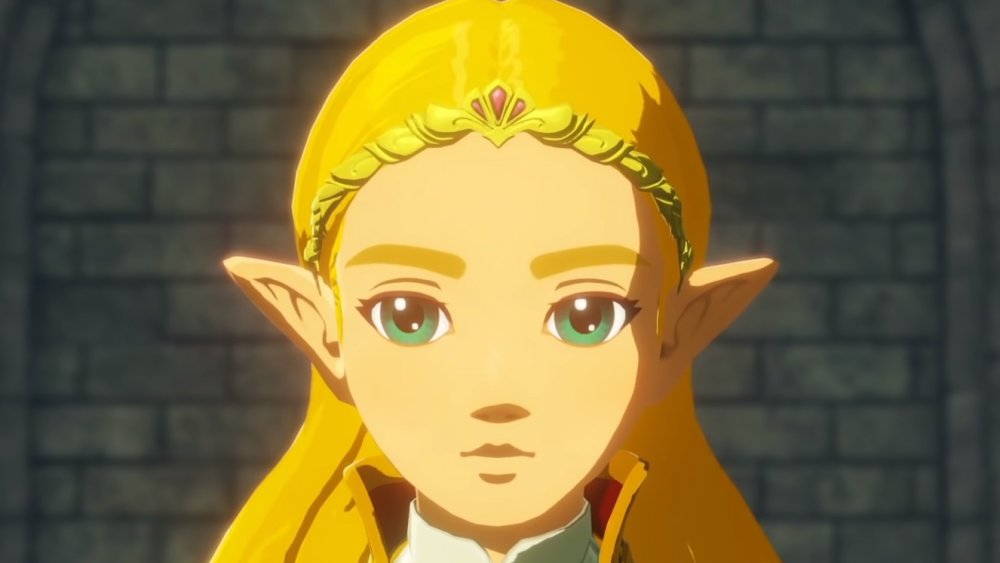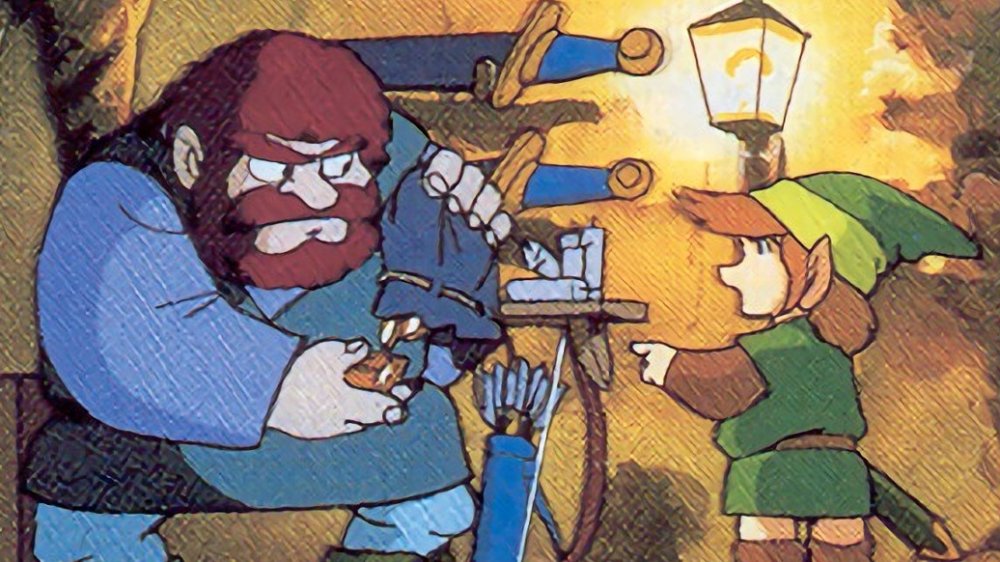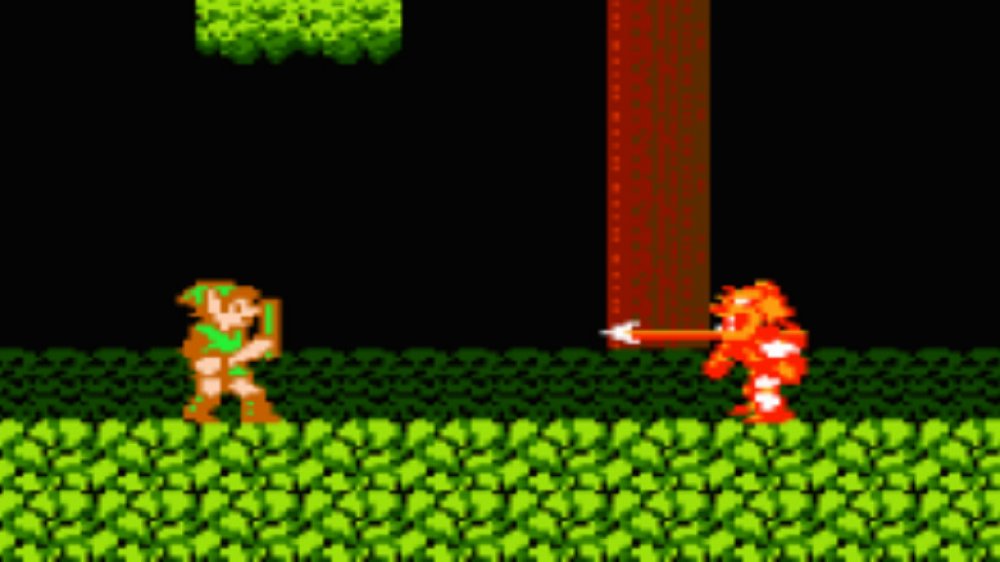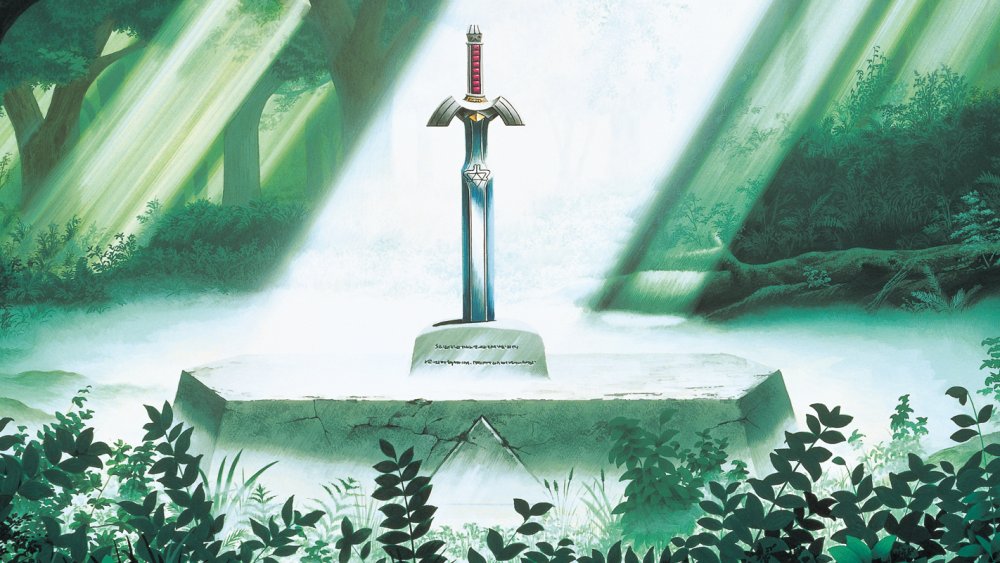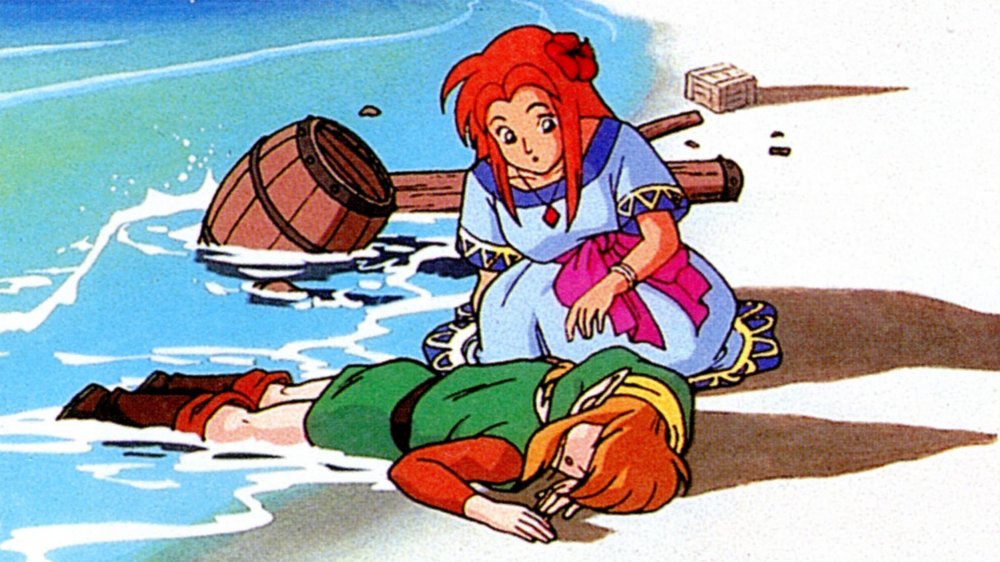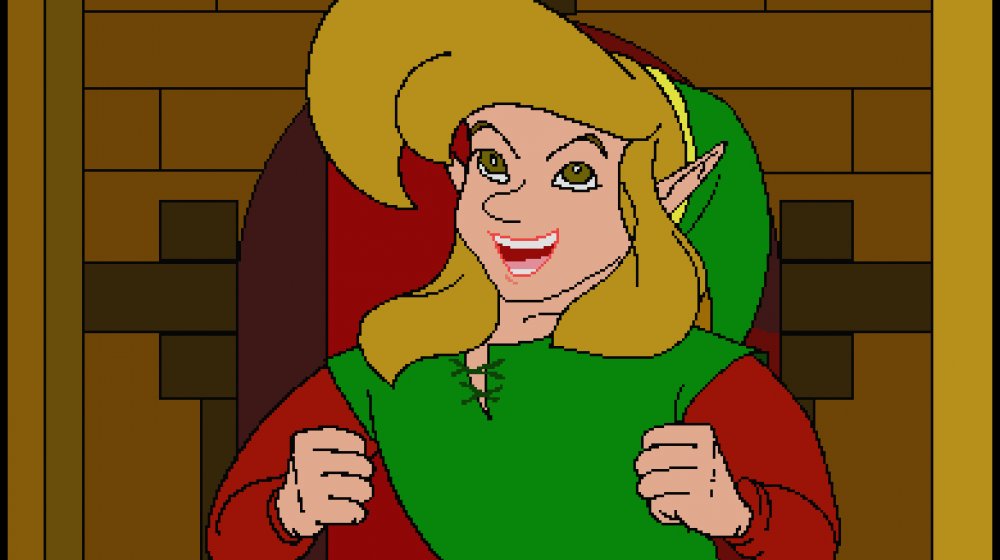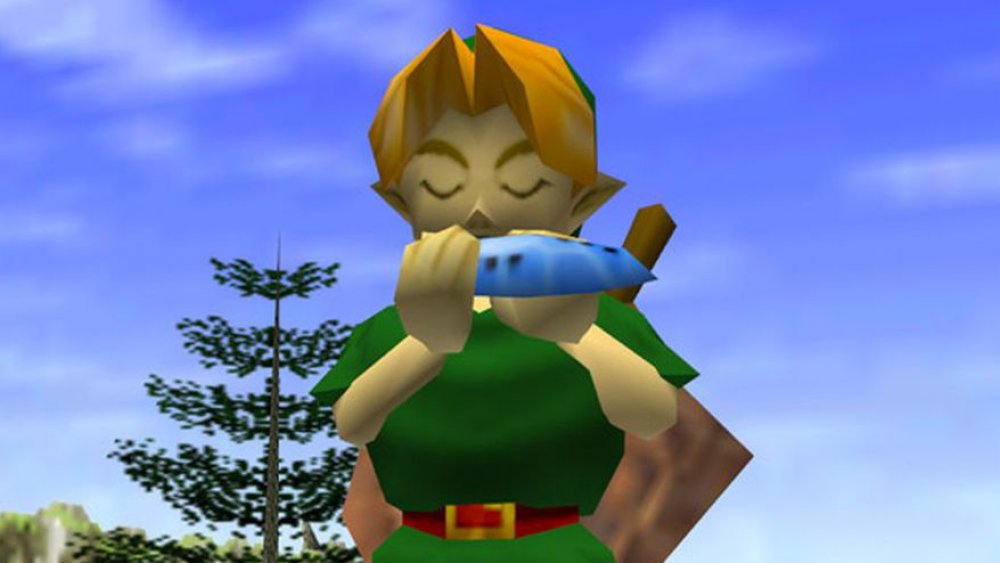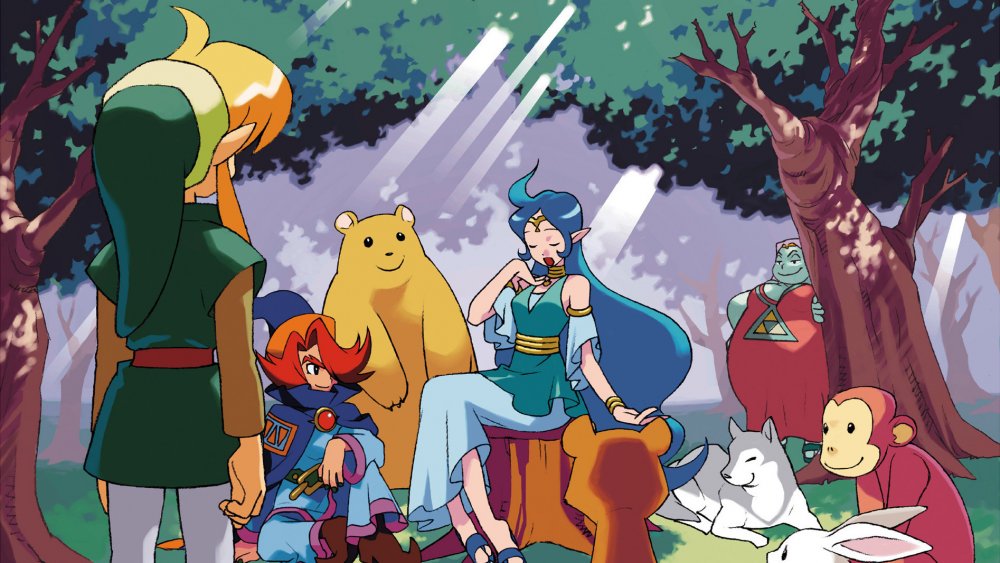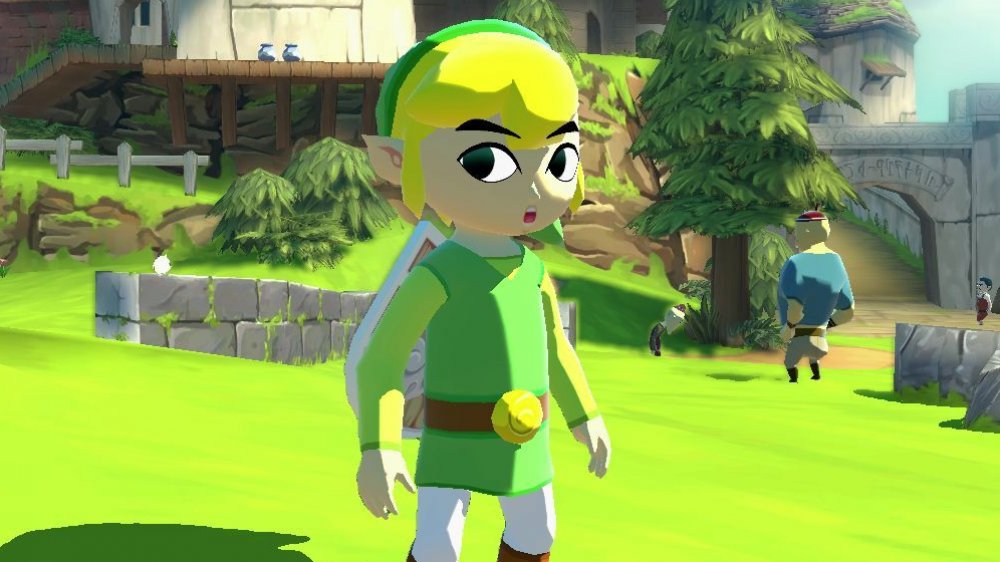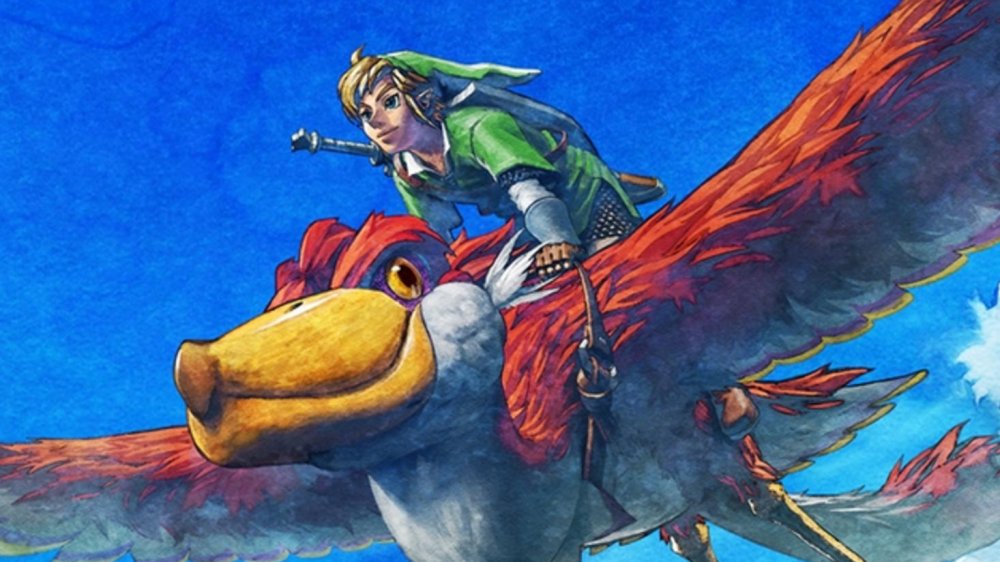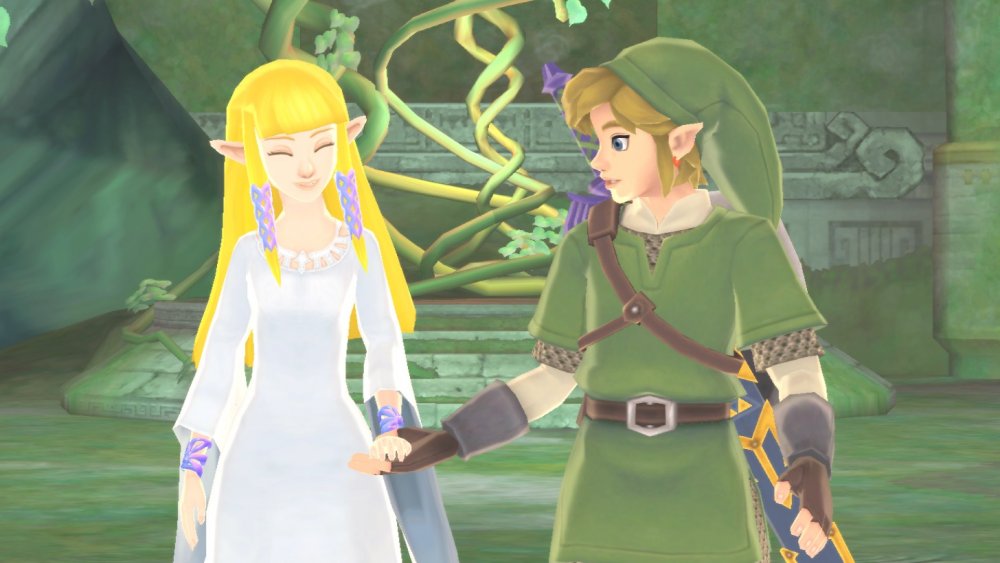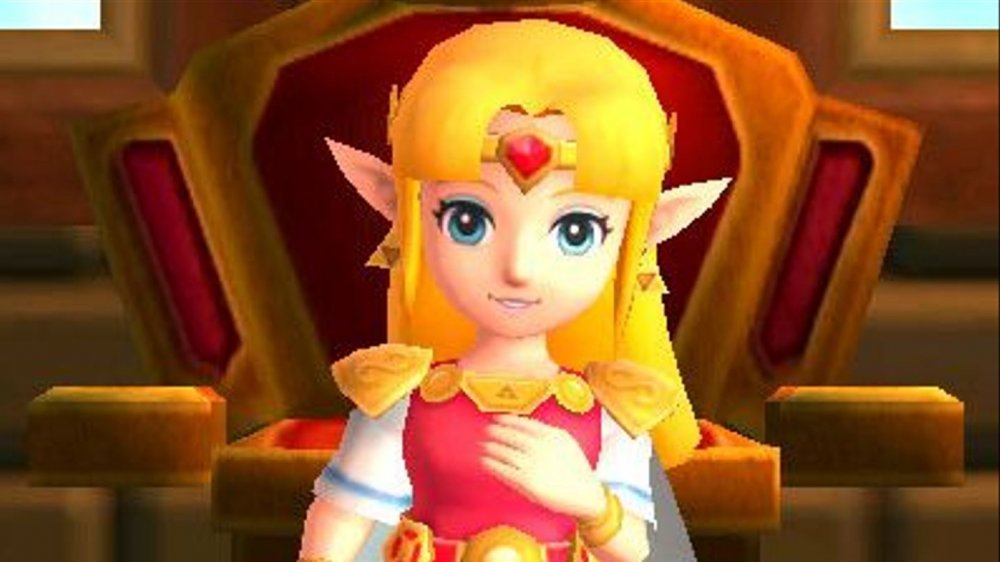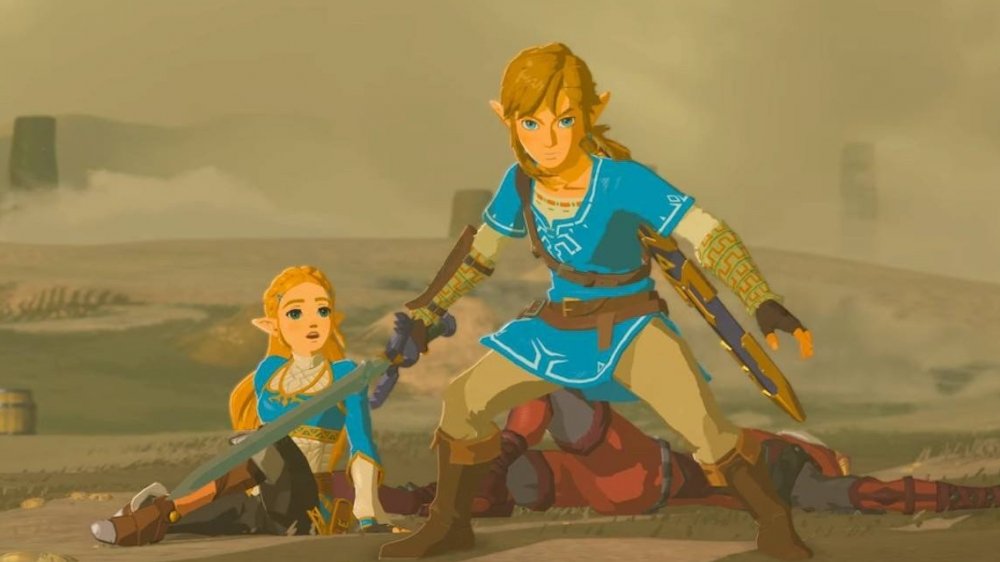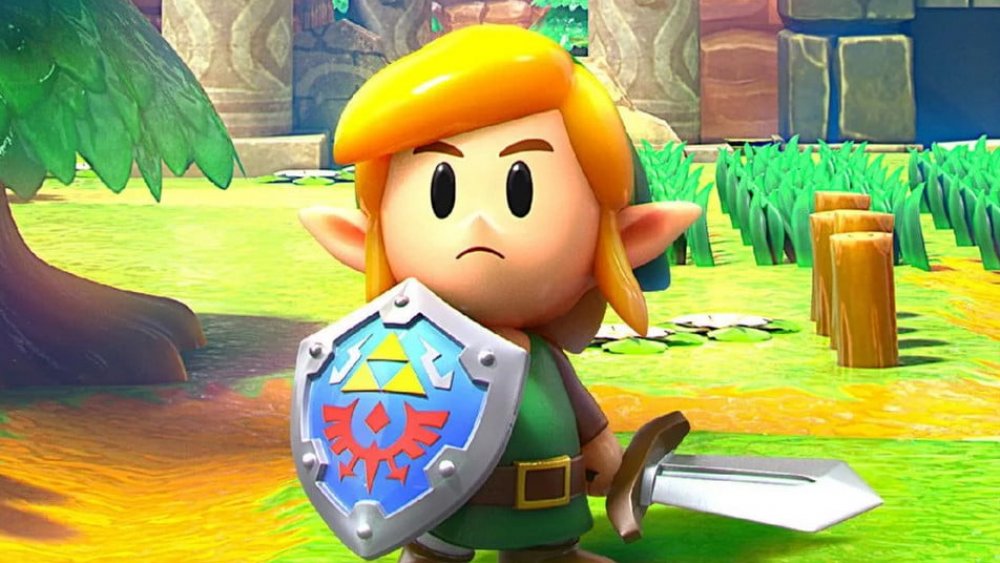The Stunning Transformation Of The Legend Of Zelda
If you've followed Nintendo's iconic The Legend of Zelda series over the past few decades, you've likely noticed how much it's changed with each new installment. A franchise that started out with a pixelated NES adventure now appears on every Nintendo platform and features some of gaming's most well-known characters.
How did Nintendo manage to make a series so consistent, yet so varied? The answer to this question involves several years of innovation and experimentation from the Zelda team. Many of the Zelda games introduced a new mechanic or graphical style, which the follow ups used as a foundation. While the core concepts stay the same, the developers find ways to keep the series feeling fresh.
From the first The Legend of Zelda game to the Link's Awakening remake, here are the stepping stones in the series' journey to its modern design. These titles demonstrate how Zelda has transformed over the years.
The Legend of Zelda released as a counterpart to Super Mario Bros.
The first Zelda game came out on Feb. 21, 1986, as a conceptual opposite of the first Super Mario Bros. game. Since the same team worked on both titles, they designated Super Mario Bros. as a linear game and The Legend of Zelda as an open one. Shigeru Miyamoto explained how his team approached their simultaneous development in a 2003 interview with Superplay Magazine.
Since Nintendo developed The Legend of Zelda and Super Mario Bros. so closely together, the two games share plenty of resources and concepts. In fact, the developers originally called the Zelda project "Adventure Mario" before it became The Legend of Zelda that fans know. The fire bars that you see in Super Mario Bros. originally came from The Legend of Zelda's assets. Gannon and Bowser have the name the "Great Demon King" in their respective games' Japanese manuals. The Legend of Zelda's Japanese manual also refers to the Manhandla boss as a giant "Pakkun Flower," the Japanese name for a Piranha Plant.
Zelda 2: The Adventure of Link took a different approach to mechanics
After the success of The Legend of Zelda, Nintendo released a sequel on Jan. 14, 1987. Created by a different team than The Legend of Zelda, The Adventure of Link has many mechanics still considered unique among the games in the series. You can see these features explained in the game's instruction manual.
The Adventure of Link combines top-down world map exploration with sidescrolling towns and dungeons. When Link encounters a monster on the world map, the game switches to a side-scrolling perspective for the battle. Depending on the type of terrain where Link finds a monster, fights can happen in environments like plains, caves, and the desert.
Link also earns experience points and levels up in The Adventure of Link. After defeating enemies, he gains an amount of experience based on the enemy's strength. When Link reaches a new level, the player can choose between upgrading his attack power, his magic efficiency, or his defense, and the game ends when Link runs out of lives. Like in classic Mario titles, the player has to start over after Link dies three times.
A Link to the Past introduced the series' legendary weapon
Released on Nov. 21, 1991, The Legend of Zelda: A Link to the Past established the most common progression path for Link's iconic weapon. It was the first game in the series to have the Master Sword, which would go on to become a staple in the lore and gameplay of future installments. In A Link to the Past, Link has to retrieve the Three Pendants of Virtue to claim the Master Sword from the Lost Woods. After A Link to the Past, the Master Sword appears in Ocarina of Time, Wind Waker, Twilight Princess, Skyward Sword, Breath of the Wild and many other entries.
A Link to the Past also introduced sword upgrades — the first game simply had Link replace his sword, and the second didn't have any alternate swords. The Master Sword in A Link to the Past upgrades twice — first to the Tempered Sword, then to the Golden Sword. Compared to the Master Sword, the Golden Sword has four times the power, killing nearly any enemy with one hit.
Link's Awakening established The Legend of Zelda's musical foundation
The first Zelda game on a handheld system, Link's Awakening, released on June 6, 1993. In this entry, Link ventures outside of Hyrule to visit Koholint Island, a brand new world.
Link's Awakening was the first Zelda game to feature music as a critical mechanic. After Link obtains the Ocarina, he can learn three songs with different powers. "Frog's Song of Soul" revives the dead to give Link access to the Tal Tal Mountain Range, Eagle's Tower and Turtle Rock. "Manbo's Mambo" warps Link to Manbo's Pond or the beginning of a dungeon. The game's most iconic playable song, "The Ballad of the Wind Fish," opens the game's final dungeon and awakens the Wind Fish.
After Link's Awakening, many of the series' flagship titles featured mechanics involving songs with magical powers. Ocarina of Time might come to mind first, with the eponymous Ocarina teleporting Link, changing the weather and controlling time when the player inputs musical notes using corresponding buttons. But, you also see musical mechanics in Zelda games that don't have an instrument at the forefront like Twilight Princess and Skyward Sword.
The Faces of Evil and The Wand of Gamelon demonstrated the importance of quality development
In addition to a franchise's successes, its failures influence its transformation over the years. Yes, it's time to talk about those games.
The two most well-known Zelda CD-i games, The Faces of Evil and The Wand of Gamelon were the first entries in the series to release on a non-Nintendo system on Oct. 10, 1993. If you've heard of them, you probably know that these titles faced a lot of backlash from gamers and critics. However, you might not have heard about the expectations that the developers dealt with during development.
A Zelda Universe interview with Dale DeSharone, the manager of the games' development team, revealed that the developers had a tight budget, short timeline and high standards to meet. Each game had a budget of $600,000 and a timeline of a little over a year. Yet, since it was a Nintendo franchise, the higher-ups had high expectations.
In retrospect, DeSharone thought that he and his team did well, considering all the constraints they had to handle. "Given the amount of time we had, and what we were creating at the time in terms of company infrastructure, I thought we did a good job," he told Zelda Universe.
Ocarina of Time made Zelda feel more real than ever
Link entered the third dimension with the release of Ocarina of Time on Nov. 23, 1998. In addition to 3D graphics, the game had plenty of detailed touches that added a sense of realism like never before. The late Satoru Iwata talked with the original dev teams during the release of Ocarina of Time 3D for the Nintendo 3DS and felt that they enjoyed seeing the game improve during every day of development. With the Nintendo 64's technology, they could achieve small touches of realism that were groundbreaking at the time.
In the Iwata Asks where Iwata mentioned his conversation, Shigeru Miyamoto highlighted how his team made interactions with wooden signs more dynamic. While they couldn't make the cuts on a sign correspond to where the player put them, they created plenty of cut patterns to add the illusion of directional cuts. At first, the pieces from a cut sign would fall in water unrealistically, so the team avoided putting signs near water. But, once someone made the sign pieces float, they wanted to put signs near the water wherever they could so players could enjoy the interaction.
Oracle of Seasons and Oracle of Ages offered connected storylines
On May 14, 2001, Zelda returned to handheld systems with two games: Oracle of Seasons and Oracle of Ages. Nintendo partnered with Capcom to create these entries. Known collectively as the Oracle series, Oracle of Seasons and Oracle of Ages released at the same time with linked scenarios. After completing one game, the player receives a password that they enter into the other game to continue the story. If the player completes both games, they reach a special ending to both scenarios.
Nintendo and Capcom originally planned on making three games in the series, but they had to cut it down to two. During earlier development, they called the three games the Mystical Seed series and the passcode system the Tri-Force system. The development team found it too complicated to connect three scenarios while maintaining a high standard of quality, so they narrowed their focus to two games instead.
The Wind Waker showcased playful cel-shaded graphics
The Wind Waker introduced a new cel-shaded graphical style for Zelda games on March 24, 2003. Toon Link started with a single sketch that sparked a wave of creativity among the game's designers. After introducing evolved Ocarina of Time-styled graphics at Nintendo Space World in 2000, the Zelda team was in a creative slump. While they had technologically advanced graphics, they debated whether continuing with them was the right path.
Design manager Yoshiki Haruhana gave the team a new direction when he showed his colleagues a sketch of the first Toon Link design. Satoru Takizawa, The Wind Waker's other design manager, told Satoru Iwata in an Iwata Asks interview that his "designer's spirit came to life." With a cartoonish Link, he and the other designers would have more creative freedom with his action animations. He immediately drew the first The Wind Waker Moblin enemy design.
According to The Wind Waker director Eiji Aonuma, the sketches had the creative team coming up with ideas incredibly quickly. They imagined how Toon Link and the Moblin could fight and branched out from there.
Twilight Princess revisited realistic Zelda graphics
With the release of Twilight Princess on Nov. 19, 2006, the Zelda team went back in the graphical direction they were going with Ocarina of Time and Majora's Mask. After exploring a new side of child Link through The Wind Waker's cartoonish graphics, they had to find a way to do the same with an older Link in Twilight Princess. They considered the Nintendo 64 games' pseudo-realistic styles more appropriate for Link as a teenager.
Returning to a more realistic style had its challenges for Zelda designers. In an Iwata Asks interview, Satoru Takizawa said that attempting realism again made him a little nervous since "the more realistic you make characters, the more they tend to start looking a bit like plastic dolls." To give Twilight Princess its unique feel, they followed a style that they wanted to make, as opposed to a photo-realistic one.
Twilight Princess' style called back to a tech demo from 2000 that expanded on the Nintendo 64 Zelda games' graphics. Fans eager to see more visuals like the demo finally had their wish granted.
Skyward Sword drew on the arts for graphical inspiration
On Nov. 20, 2011, Skyward Sword threw another curveball into the series' graphical trends by drawing on impressionism, a painting style from the late 1800s. Designer Shigeru Miyamoto told Kotaku that his team decided to use impressionism as inspiration mainly because he was a fan of it.
These artistic influences had plenty of mechanical and aesthetic benefits. The team felt that they could better portray characters through the graphics' combination of realistic and exaggerated features. "Not only of the enemy characters, but as a representation of the sword spirit itself," developer Eiji Aonuma told the Official Nintendo Magazine (via Eurogamer).
Skyward Sword's focus on slash direction and enemy vulnerabilities made it necessary to clearly communicate an enemy's weapon position. By exaggerating movements through an impressionist style, the developers thought that they could clarify gameplay for the player. "You have to match the art style to how the game plays, and we thought this worked best," Aonuma said.
The official Zelda timeline changed what fans knew about the series canon
Nintendo turned the Zelda canon on its head within a few book pages. Published on Dec. 21, 2011, the Hyrule Historia guidebook established an official timeline for the series. Before, The Legend of Zelda timeline was up to fan speculation.
According to Hyrule Historia, everything that happens in the Zelda series started with Skyward Sword, which set up the conflict between Link and Ganondorf. The Minish Cap and Four Swords, both games that feature Vaati, follow afterward. When the timeline reaches Ocarina of Time, things start to get a little bonkers.
The Zelda timeline manages to fit so many games in the same continuity by splitting time through Ocarina of Time's story. The plot centers on time travel, which enabled Nintendo to create three timelines that branch from it. One timeline follows what happens if Ganondorf defeats Link, while the other two follow the Child and Adult Link timelines if Link triumphs. All of the games not mentioned so far, including the original Legend of Zelda, happen during one of these branches.
Today, you don't have to buy a copy of Hyrule Historia for an official Nintendo source. You can view the timeline whenever you like by visiting the Zelda website.
A Link Between Worlds shook up the traditional Zelda dungeon order
Released on Nov. 22, 2013, the direct sequel to A Link to the Past, A Link Between Worlds, rethought the traditional Zelda formula that required the player to complete dungeons in a specific order.
"Every time we make a new Zelda game, we always look for a different approach," director Hiromasa Shikata told Satoru Iwata in an Iwata Asks interview. When he remembered A Link to the Past, he thought that it let the player complete many dungeons at the same time, but he discovered that he was wrong when he replayed it. This realization inspired him to make A Link Between Worlds more flexible.
The importance of items in Zelda games made this approach tricky at first. Before, the player would use the item from one dungeon to access the next. To get around this challenge, the developers implemented an item rental system. You can rent the items in A Link Between Worlds for fairly cheap, but you lose them whenever you get a game over. During development, the Zelda team thought that this approach would motivate players without making the game too easy.
Breath of the Wild delivered the Zelda take on open-world gameplay
When it came out as a Switch launch title on March 3, 2017, Breath of the Wild turned the Zelda series' gameplay on its head with an open-world approach that retained staples like puzzle-solving and exploration. While it followed the trend of open-world gameplay among its generation, it created an experience only attainable by Zelda.
The Zelda developers kept their open world polished through careful planning and the clever use of automated technology. In an interview with The Verge, three key team members explained many of the game's creation and quality assurance processes. During playtesting, they had a centralized tool that tracked player data in real time and indicated difficult regions of the game. They also accounted for as many issues as possible. When asked if they faced any unexpected problems, director Hidemaro Fujibayashi said that most of their challenges were ones they expected to deal with.
According to a Famitsu interview (via Gematsu), open-world gameplay will likely become the Zelda series' standard moving onward. Who knows how the next flagship Zelda title will reinvent this game structure?
The Link's Awakening remake let players build their own dungeons
A remake of Link's Awakening for the Nintendo Switch released on Sept. 20, 2019 and introduced a brand new dungeon creator feature called Chamber Dungeons. It replaced the Camera Shop from Link's Awakening DX with a location where you can build a dungeon from pre-made rooms.
GameSpot reported that during a Treehouse demo, series producer Eiji Aonuma said that he created the feature with ease of use in mind. While he wanted to give players a way to make their own dungeons, he also didn't want to make it too hard. He compared the experience he had in mind to solving a puzzle.
Chamber Dungeons also integrated Amiibo features through "plus effects." For example, scanning the Link's Awakening Amiibo adds a Shadow Link that chases you throughout your custom dungeon. Zelda Amiibo figures released before the Link's Awakening remake unlock new chambers. You can also save a completed Chamber Dungeon to an Amiibo to share with other players.

